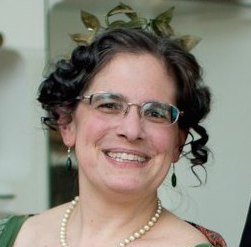- Era: 1860s-1880s
The Union Dance is a short, schottische-like dance sequence which I have found in only two sources: Thomas Hillgrove’s 1863 A Complete Practical Guide to the Art of Dancing (pp. 170-171) and the 1883 Professor M.J. Koncen’s Quadrille Call Book and Ball Room Guide (p. 89) The latter is a compilation of numerous other sources and the instructions therein are nearly identical to the earlier ones, so Hillgrove may be regarded as the preferred source for dating this dance. Given the timing and Hillgrove’s location in New York, it is possible that the name of the dance was meant as a political statement, though it is also possible that it was simply the name of a tune to which it was danced or a completely random title.
While no specific music is given in either source, both mention that the music should be in 6/8. The dance will work with any schottische tune, however. Dancers take the usual ballroom position, with the gentleman facing out toward the wall and the lady toward the center of the room, joined hands towards line of dance. The sequence is divided into two parts. Steps below are given for the gentleman; the lady dances on the opposite foot.
Part One (four bars)
1b Slide left along line of dance; close right in third behind
1b Repeat, closing right without weight
2b Repeat all of this to the right, against line of dance, closing left without weight at the end
Part Two (four bars)
2b Four-slide galop: slide-close-slide-close-slide-close-turn-hop (half-turn)
2b Complete polka turn (slide-close-turn-hop, slide-close-turn-pause)
The dancers are left turned halfway from starting position, elbows towards line of dance. The entire dance repeats in reverse, gentleman starting with the right foot sliding along the line of dance.
Notes
The first part of the dance is much like an early schottische sequence with the dancers moving back and forth along the line of dance, though it leaves out the hop one would expect on the fourth count. The second part follows the schottische pattern in being a turning sequence and is identical to the popular contemporary polka/galop combination known as the Esmerelda.
I regard the hop in the polka has coming on the upbeat at the beginning of the step rather than at the end, so I believe the hop at the end of the galop is the initiating hop for the polka that follows, and the final polka ends without a hop in preparation for recommencing the sequence. The original instructions merely say to polka without specifying this level of detail.
Because this sequence travels against line of dance in the first part, it must be danced with care in a crowded ballroom unless all the dancers are performing it in unison.
I am indebted to Patri Pugliese for bringing this dance to my attention via his superb handouts for Newport Vintage Dance Week.


Leave a Reply